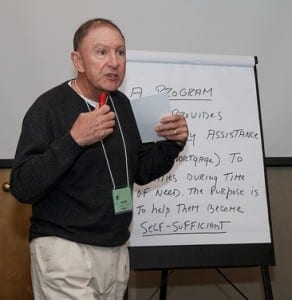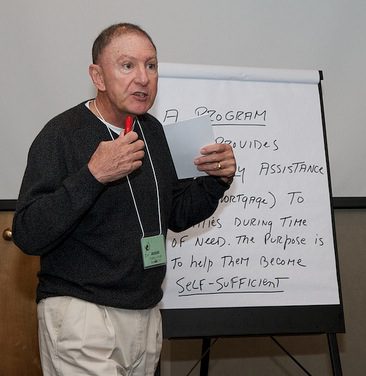 Jim Claffey presents candid reflections in the aftermath of his Belleville workshop presentation “Project Uplift and Systemic Change.” He shared the ways the project was and was not involved in systemic change. Of particular interest is his presentation of the resistance he ran into when he shared some of the suggestions from the participants in the Belleville worksop.
Jim Claffey presents candid reflections in the aftermath of his Belleville workshop presentation “Project Uplift and Systemic Change.” He shared the ways the project was and was not involved in systemic change. Of particular interest is his presentation of the resistance he ran into when he shared some of the suggestions from the participants in the Belleville worksop.
Reflection
- As you read this very brief case study what reactions did it trigger in you?
- How do you handle resistance?
- What would Vincent or Louise do in this situation?
UPLIFT AND SYSTEMIC CHANGE
By Jim Claffey
The recent Vincentian Family Gathering, held in November 2010 in Belleville, Illinois, focused on the topic “Systemic Change.” I had the privilege of presenting a brief workshop on “UPLIFT,” a program of the Rockville Centre Council of the Society of St. Vincent de Paul.
UPLIFT began in 1990 as a response to the increasing costs of housing on Long Island. Since that time UPLIFT has provided $1, 282, 054 to 320 families in a carefully crafted process based on an ongoing relationship between the visiting Vincentians and the family in need. UPLIFT provides temporary assistance for rent or mortgage with the goal of helping the family achieve financial independence. A condition for participation is that there be “light at the end of the tunnel” for the family, i.e. reasonable hope that after six months or one year typically, or up to two years in some cases, the family will be self-sufficient.
I was happy to present UPLIFT. It has been very successful. Results show that 97% of participants complete the period of assistance without the need for extension. I said at the outset of the workshop, however, that I thought that UPLIFT qualified as a project of “systemic change” only in the broadest definition of the term.
My doubts centered on the fact that UPLIFT does not address the root causes of poverty, nor does it have wide-ranging social impact. And it obviously does not deal with people living in chronic poverty. UPLIFT does fulfill other characteristics of systemic change: it is sustainable, replicable, innovative, and engages those helped in seeking solutions.
Following my presentation, workshop participants offered two excellent suggestions:
- It would be beneficial to carry out a longitudinal study to see if indeed the UPLIFT families had managed to stay self-sufficient, or if some had drifted back into need.
- Instead of using our funds to pay vendors directly, why not put the assistance into the hands of the family once the relationship was strong? That gesture would manifest trust, and the results would be another measure of the worth of the program.
So I was reminded once again of the wisdom of the group, how wisdom seems to flow freely when several or many share together on important things such as helping those living in poverty.
This experience taught me that immediate assistance and social change are not either/or but both/and. A program can be tweaked, an ingredient added or an approached altered, and a good program can become even better, even one of real systemic change. A program with some elements of systemic change can be shaped more fully towards that goal.
When I returned to Council work, I shared the two suggestions emanating from the workshop, and encountered resistance. Members felt that the longitudinal study would be very difficult to carry out because many families have since moved away, and circumstances within families are always changing. Others resist the idea of providing funds directly to clients out of fear that money in their hands might cause other problems.
Perhaps further discussion of both issues should take place more broadly, and perhaps they will be seen more favorably. But at this writing I am reminded of another truth, that sometimes it is easier to leave things as they are, or start a new program, rather than change what has worked for 20 years, even if the idea is to improve it.
Tags: Anti-poverty strategies, Featured, SVDP, Systemic change


Personally I don’t see this so much as resistance, as in, a group of people that is resisting change. These could be necessary decisions based on practicality and priorities. For example, the longitudinal study may be a good idea but I can also see where it would be tough to locate and interview all 320 families. Might not be the best use of Vincentians’ talents, or they may not even know how to go about tracking down families’ whereabouts. Would it be worth hiring an outside firm to do this study? If not, then it may not be worth a volunteer’s time either. Better to set a plan in place for the future, perhaps saying they will make it a point to call all their clients every 2 months or so, this way they can try to keep up with the families’ status. Or, maybe request that the families let them know if they’re going to be moving or changing their number, or have them call and let them know how they’re doing in 6 months. Regarding the second suggestion of providing funds directly to the clients, auditors advise never to do this, & that an invoice is required to show where the money went. So it is possible that there could be some real issues here, unrelated to changing attitudes.